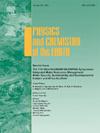An integrated comprehensive approach describing structural features and comparative petrophysical analysis between conventional and machine learning tools to characterize carbonate reservoir: A case study from Upper Indus Basin, Pakistan
IF 4.1
3区 地球科学
Q2 GEOSCIENCES, MULTIDISCIPLINARY
引用次数: 0
Abstract
More than 70% of the global hydrocarbon reserves are present in carbonated rocks. Evaluating prospects in carbonate reservoirs is a complicated task because of their unique depositional features. The Eocene carbonates in the Joyamair oil field are heterogeneous and present challenges defining the entrapment and sealing mechanism by applying traditional methods. Although structural interpretation revealed a positive triangular geometry, estimating accurate reservoir properties requires an effective model for assessing hydrocarbon presence. Therefore, an optimized machine learning (ML) approach has been deployed to address reservoir challenges and delineate the potential with a high success rate after drawing a comparison with the conventional approach. Two wells were utilized for petrophysical evaluation in the conventional method, while one well (Joyamair-04) was kept blind in a supervised ML approach. Extra Tree Regressor (ETR) produced a low volume of shale and effective porosity (PHIE) high results with more than 99% R2 and least mean square error score. Random Forest Regressor (RFR) showed water saturation (Sw) results with about 100% accuracy compared to conventional interpretation at a blind well. Volumetric reserve estimation also proved economical hydrocarbon reserves present in the reservoir formation. The study revealed that integrating conventional and ML techniques along with structural geometry aided better reservoir characterization and reserve estimation. The study proved that ML algorithms outperformed traditional petrophysical methods in accuracy and efficiency.
一种描述碳酸盐岩储层结构特征的综合方法,以及常规和机器学习工具之间的岩石物理对比分析:以巴基斯坦上印度河盆地为例
全球超过70%的油气储量存在于碳酸盐岩中。由于碳酸盐岩储层独特的沉积特征,其前景评价是一项复杂的任务。Joyamair油田始新世碳酸盐岩具有非均质性,用传统方法确定圈闭机制存在挑战。尽管构造解释揭示了正三角形的几何形状,但准确估计储层性质需要有效的模型来评估油气的存在。因此,采用优化的机器学习(ML)方法来解决储层挑战,并在与常规方法进行比较后,以高成功率描绘潜力。采用常规方法对两口井进行岩石物理评价,另一口井(Joyamair-04)采用监督式机器学习方法进行盲测。Extra Tree Regressor (ETR)产生的页岩体积小,有效孔隙度(PHIE)高,R2大于99%,均方误差分数最小。与盲井的常规解释相比,随机森林回归(RFR)显示的含水饱和度(Sw)结果准确率约为100%。体积储量估算也证实了储层中存在经济的油气储量。研究表明,将常规技术和ML技术结合起来,结合结构几何,有助于更好地描述储层特征和储量估计。研究证明,ML算法在精度和效率上都优于传统的岩石物理方法。
本文章由计算机程序翻译,如有差异,请以英文原文为准。
求助全文
约1分钟内获得全文
求助全文
来源期刊

Physics and Chemistry of the Earth
地学-地球科学综合
CiteScore
5.40
自引率
2.70%
发文量
176
审稿时长
31.6 weeks
期刊介绍:
Physics and Chemistry of the Earth is an international interdisciplinary journal for the rapid publication of collections of refereed communications in separate thematic issues, either stemming from scientific meetings, or, especially compiled for the occasion. There is no restriction on the length of articles published in the journal. Physics and Chemistry of the Earth incorporates the separate Parts A, B and C which existed until the end of 2001.
Please note: the Editors are unable to consider submissions that are not invited or linked to a thematic issue. Please do not submit unsolicited papers.
The journal covers the following subject areas:
-Solid Earth and Geodesy:
(geology, geochemistry, tectonophysics, seismology, volcanology, palaeomagnetism and rock magnetism, electromagnetism and potential fields, marine and environmental geosciences as well as geodesy).
-Hydrology, Oceans and Atmosphere:
(hydrology and water resources research, engineering and management, oceanography and oceanic chemistry, shelf, sea, lake and river sciences, meteorology and atmospheric sciences incl. chemistry as well as climatology and glaciology).
-Solar-Terrestrial and Planetary Science:
(solar, heliospheric and solar-planetary sciences, geology, geophysics and atmospheric sciences of planets, satellites and small bodies as well as cosmochemistry and exobiology).
 求助内容:
求助内容: 应助结果提醒方式:
应助结果提醒方式:


